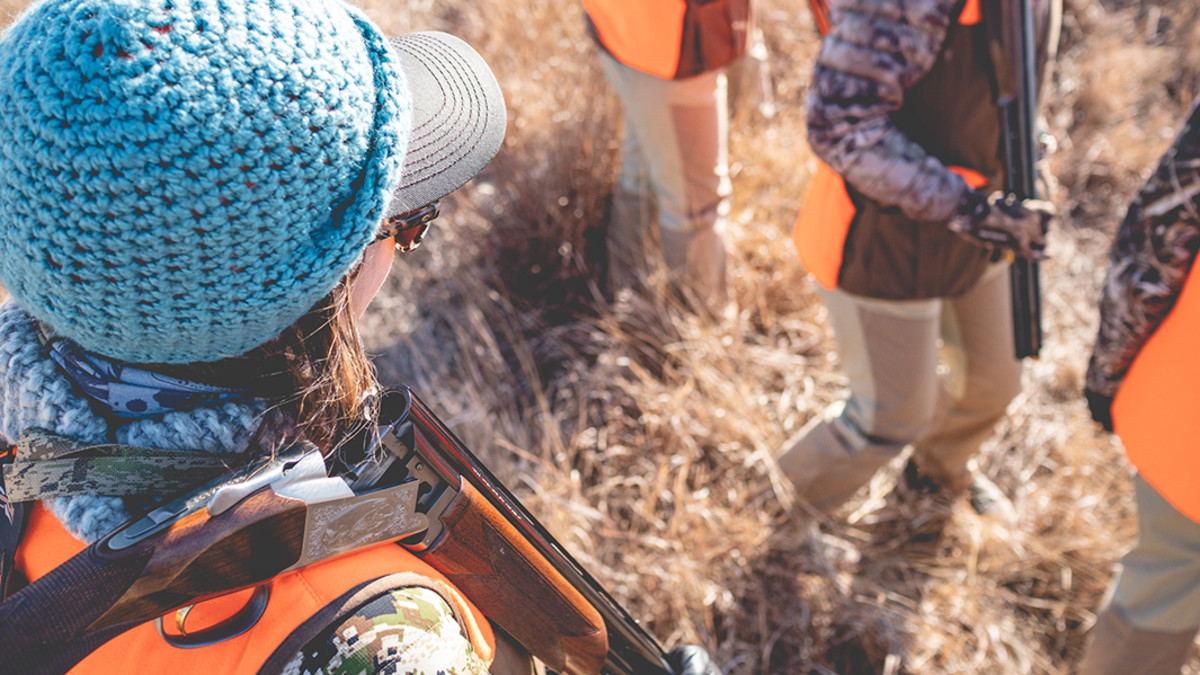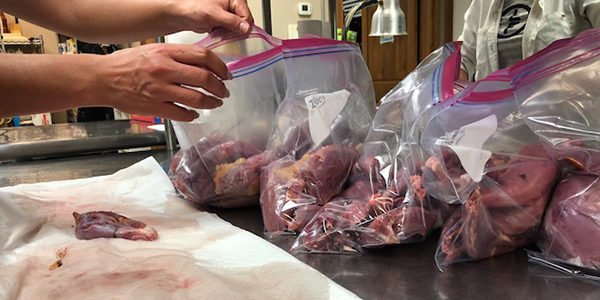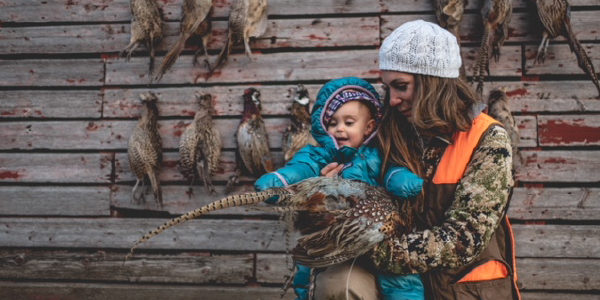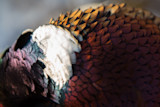
As a relatively new hunter, it’s exciting to engage in conversation about the subject. Much like the days when I was new to fishing, now I light up at even the slightest chance to talk about deer, archery, and recipes.
In each discussion with fellow outdoorsmen and women, I learn something new. Animal behavior, opinions on ethics, history, cooking methods… but it’s the fascinating discussion about “why we do it” that interests me the most. Hunting is a personal experience and can impact everyone differently. Just as one hunter may prefer a bow to a rifle, there are some who dedicate their entire lives to pursuing a particular species.
Over the last few years, I’ve found myself increasingly intrigued by experienced hunters who “only hunt birds these days.” I know a great many of them and have always ignorantly associated the shift with age and dogs. Most of my friends who “only hunt birds” are over the age of fifty, or are the proud owners of energized bird dogs.
This stereotype deterred me from learning more about hunting for upland game birds, as well as for waterfowl. I figured I’d get there in the next couple of decades when I was in one spot long enough to have a high-energy hunting dog.
The only bird hunting I’d ever done was with a compound bow for grouse. I’d shot grouse on the ground and out of trees, but never while they were flying (“on the wing” as I’d heard it called before). At times I’d thought about taking a shot on a fluttering bird, but am not that talented on my bow — or that comfortable with my wallet. Lost arrows start to add up!
So this November when I was invited on a pheasant hunt in Iowa, I was quick to say “yes.” Nine other gals accepted the invitation, and I was looking forward to making some new friends. Even more exciting, however, was the opportunity to see if I could recognize the appeal of upland bird hunting.
My inexperience showed in my packing. I packed clothing to belly-crawl in, binoculars to sight with, and would’ve even packed a ground blind had I owned one. I truly had no idea what to expect. I packed warm clothing, comfortable boots, and a small cooler (just in case).
My daughter and I landed in Iowa on a sunny afternoon. The other women had already arrived, and the energy was surging. The plan was to get settled in for the night, then hit the shooting range the next morning to do some clay-shooting before hunting that afternoon.
We were scheduled to hunt ringneck pheasants on a licensed hunting preserve in central Iowa. The ringneck pheasant is primarily a ground bird, but it can fly for short distances before needing to touch back down again. I was familiar with them from years of tying flies for fishing. Ringneck pheasants are gorgeous birds that are native to China and introduced to North America in the 1800s. The males (called roosters) are vividly colored with a striking white feathered collar. They have so many feathers in assorted colors, shapes, and sizes that a well-kept cape can last even the most serious of fly-tyers for several years.
When I heard we’d be hunting in a field, I puffed up thinking I had an advantage. I hunt grouse almost every day during the season’s opening and am skilled at spotting birds before they spot me. But this skillset was irrelevant while pheasant hunting — I literally stepped on several birds without even knowing they were there.
Being from British Columbia, I unintentionally flush grouse almost every day. After thirty-five years of it, I still startle whenever a bird erupts from the ground, leaving nothing more than my racing heart and the fading echo of its beating wings. But the grouse in BC don’t wait until you’re stepping on them to take flight, and having the pheasants decide to bolt at such close proximity was even more heart-stopping.
Pheasants nestle themselves into the safety of long grass and holes in the ground, often leaving only their tail feathers exposed. This makes for a hilarious surprise when an unknowing passerby bends down to pick one up (as we soon found out). Admittedly, we were hunting for farmed pheasants that were bred specially to be released and hunted. We were allowed to shoot both roosters and hens since the birds were pen-raised and we would not affect the wild populations.
I was told these birds have a slower reaction time than wild birds, which makes me unsure if we’d have had the same close encounters in a wild setting. Honestly, I personally wouldn’t hunt farmed birds again, but it was beneficial to see how the process unfolded — especially seeing it unfold slow enough to be able to absorb the experience.
Once our vest pockets were heavy with shotgun shells, the guides positioned us ten feet apart from one another, facing toward the field. From here, we walked forward at the same pace; guns with their safeties on and pointed straight into the air. Like a mob of angry villagers looking for a fugitive, together we followed the dog’s lead.
The dogs themselves were an experience. They ran through the field methodically, noses to the ground as they tracked and tried to pick up the scent of birds. On this trip, we were using a pointer wearing a traceable collar. This way, our guide could track its coordinates in the long grass. More importantly, he could see if it stopped moving. I was told to keep my eyes on the dog’s tail.
Once his tail stiffened and pointed straight behind him, two of the more experienced gals confidently marched forward. A pheasant sprung to flight. They waited until the bird was in the skyline so that the dog didn’t accidentally get shot, and then they blasted shots into the air. A dead bird plummeted to the ground — the pace of it all was astonishing.
Needless to say, this brazen approach was a stark contrast to the quiet, steady stalk I was so used to while hunting. As alien as the stomping and haste were, so too was the definition of “unsporting.” Shooting birds that are still on the ground is considered unsporting, so shooting them on the wing is the preferred method of hunting by most sportsmen.
The dog retrieved the fallen pheasant and brought it back to his owner. The time and energy it takes to train a bird dog will probably limit my future bird hunting (with dogs anyway), but it’s impossible not to appreciate and admire the teamwork between man and canine. Witnessing this sort of working relationship was a significant highlight of the hunt.
As bird after bird evaded my shots, I turned to the guide for advice. It felt like it was taking me an eternity to flip off the gun’s safety, snug it into my shoulder, line up the bead, and take aim before the bird flew too far away. The guide kindly informed me that I was taking too much time lining everything up — a habit, no doubt, from bow hunting. The suggested remedy was to “shoot anyway, ‘cuz you can’t hit something if you don’t pull the trigger.” I struggled with the advice, even though it made perfect sense. On the bow, I don’t take shots unless I am entirely dialed-in and certain my arrow will hit its intended target. That said, with bow hunting, I am always looking to make a kill shot.
I noticed there were birds shot at close proximity and killed immediately, but that there were also those that were merely clipped and left to die upon hitting the ground. I expressed my concern, and the guide responded that this all comes down to where the shotgun shell pellets hit the bird. Headshots were ideal, and a shot more than 20 yards away meant less chance of annihilated meat. I found myself facing conflicting viewpoints. While I wanted to shoot at proximity to ensure a quick kill, I’d seen the consequences of a bird shot too close. Some of the bodies barely hung together by ligaments, while others had more holes in them than a piece of Swiss cheese… not to mention the discomfort of biting into a pellet. Headshots made sense, so I went back to the shooting range to practice on clays.
The next day, we went back to the field, where more birds had been released from the pen and into the grasslands. Though I still couldn’t wrap my head around the idea of farmed birds, I felt determined to get one to hand. As the hours passed, a drooping sunset the flat Iowa landscape alight, painting the grass with a pink glow. The loud boom of shotguns rang out over the acreage — I felt like I was in a scene from the Hunger Games.
Our evening was quickly coming to an end, and I had yet to touch a bird. Tails of pheasants stuck out in all directions from the other women’s vests, reminding me that I was running on empty — both in spirit and meat. Then suddenly, with half an hour of sunlight left, the dog stopped. His tail stopped. The gals behind me froze in place. Even time seemed to stay motionless for a brief moment. I looked back at the nods of encouragement. Alone and determined, I moved forward, promising myself I wouldn’t startle at this chance, or be so meticulous, or sputter profanity if the bird flew in an awkward direction — most importantly, I promised myself I would squeeze the trigger and shoot.
She must have felt the ground tremble as I marched closer because she rose from the grassy field. Like a dragon, her majestic tail and body lagged beneath powerful flapping wings, and for a moment, she seemed to suspend in the air before promptly flying away from me. I waited until she was well into the sky, then angled my gun upward and pulled the trigger. I held my breath, then cupped my mouth as she came crashing down.
Standard practice at the preserve was for the guides to debreast the birds for guests to take home. Thighs, gizzards, and feathers filled trash bins and littered the grass. Like a madwoman, I dropped to my knees, frantically scooping up feathers and body parts out from under the feet of the bird-cleaners. At one point, I even tug-of-warred on a leg while trying to determine exactly how much meat was being wasted.
With grouse, I do my best to eat all of the bird, but I understand when people choose only to take the breasts; thighs and wings on a grouse are pretty lean. But a pheasant’s thighs are plump and meaty, plus their hearts are the perfect sized delicacy. So, on day two of our trip as we got ready to depart the van for our hunt, I called a powwow with the gals about how we’d handle the cleaning that night. Truthfully, I couldn’t stomach witnessing another session of wasteful carnage. The entire group was in agreement that we should do it ourselves to minimize waste.
But my excitement was short-lived when we got back to our B&B in the chilly darkness and remembered that we had an entire garbage bag of birds to clean. Looking back at it now, it must have been a hilarious sight: ten of us in bloodied khaki pants, gathered in a circle over a pile of dead pheasants, sharing two knives, three headlamps, and the high-beams of a parked car.
The plan was to remove the breasts and peel the thighs, then put them in bags to be washed and individually packaged later. As I reached to grab my first bird, there was silence. I looked up to see what was wrong.
“So how do we do this?”
I quickly realized that my big mouth had just landed me a role in a bird-gutting tutorial. With grouse, I always clean the birds one of three ways: by debreasting them with the “stand on the wings and pull the feet until the guts separate from the body” method, or by peeling the skin from the meat, or by plucking the feathers (though I prefer to do this after I’ve hung the bird for at least three days).
The session started slowly with carefully placed fingertips, squinted eyes, and questions about where to stand, how hard to pull, where to break, where to cut, and even how to salt feathers. But the hesitation turned to confidence, the squinted eyes took on excitement, and the carefully placed fingertips turned to bloodstained palms and cuticles.
The gals were on fire and picked up the techniques fast. As a team, they worked with one another, helping each other to feel for joints to cut through. They sorted through the organs to determine which were edible and left the feet attached for stock. The energy was contagious, and I felt a natural draw to it. It made me wonder if this is how it once was in ancient times; women gathered around their next meal, laughing and caring for one another, mouths watering at all of the meat collected. Looking back on it now, I think this was my favorite part of the trip.
We feasted on birds that night. Pheasant breast and thighs baked in oil and herbs, with risotto cooked in pheasant stock.
Pheasant hunting has been around for hundreds of years, and there are countless recipes to use the entire bird. From feathers to gizzards, feet to bones, if ever there was a bird that could be fully utilized, it’s the ringneck pheasant.
I’ve only just found the trail of crumbs leading to this historical and intriguing world of bird-hunting, but it’s a trail I’m planning to follow a little longer. One of the best things about being a new hunter is sifting through experiences and deciding which of the qualities to retain and save for later. Questions find answers, uncertainty often finds clarity, and packing gets easier. Bit by bit the pieces fit together to form the big picture — and what a beautiful picture it is.








Conversation